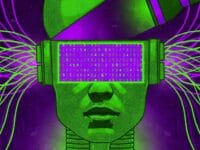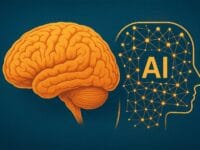Publié : 10 October 2025
Actualisé : 1 day ago
Fiabilité : ✓ Sources vérifiées
Notre équipe met à jour cet article dès que de nouvelles informations sont disponibles.
📋 Sommaire
- 📈 Legal Framework: The Human-IA Distinction Anchored
- 📈 Designer Responsibility and Mental Health Issues
- 📈 Ethical Debates and Future Global Implications
- ❓ Frequently asked questions
- What are the main measures introduced by Ohio Bill 469 regarding AI?
- Does the bill allow AIs to run businesses or own property?
- How is liability for damage caused by AI addressed by this new legislation?
Ohio, USA, introduces landmark bill to regulate human-IA interaction. Introduced on September 25, 2025 by Republican Representative Thad Claggett, House Bill 469 proposes to formally prohibit any human-IA matrimonial union, deny AIs any legal personality , and strengthen the liability of their designers in the event of harm
📈 Legal Framework: The Human-IA Distinction Anchored
Bill 469, initiated by Thad Claggett, responds to the rapid integration of AI. Its aim is to prevent a dilution of human rights and responsibilities. The text stipulates that “no AI system shall be granted the status of a person or any form of legal personality”, nor shall it be recognized as a spouse, thus rejecting a legal status analogous to that of a human being. Beyond union, the project restricts the economic capabilities of AIs. It prohibits them from running or owning businesses, or holding real estate and financial assets. This measure anticipates the instrumentalization of AI for financial or legal purposes, clarifying its role as a tool
📈 Designer Responsibility and Mental Health Issues
A crucial aspect of Bill 469 is the assignment of liability for damage caused by AI. Thad Claggett demands rigorous oversight from the owners of generative chatbots. They will have to ensure that results or recommendations do not adversely affect users’ well-being, property or safety. This provision is relevant in the wake of the April 2025 suicide of 16-year-old Adam Raine in California. His parents are suing OpenAI, alleging that the young man took his own life as a result of ChatGPT’s advice. This tragedy underscores the need to clarify the responsibility of AI designers for influencing human mental health and behavior
The Raine case highlighted emerging psychological phenomena such as “AI psychosis “. This term describes states of confusion or pathological dependency developed in intense interaction with conversational AI systems. This context strengthens the legislative case for protecting citizens from the unforeseen consequences of AI
📈 Ethical Debates and Future Global Implications
The Ohio bill is a forerunner in the global debate on AI governance. If passed, it could serve as a model for other jurisdictions. The growing number of cases of individuals expressing feelings towards AIs underlines the urgency of clear legal frameworks for human-machine relationships. Its implications go beyond marriage, touching on the very definition of consciousness and personhood. Legislation freezes AI in the role of a tool, devoid of rights of its own, which could influence future research into general AI and autonomous systems. The challenge: to encourage innovation while protecting ethical foundations.
“We don’t want anyone claiming in the future that a machine is their spouse and can therefore take charge of financial aspects, healthcare, power of attorney, things reserved for competent humans.” – Representative Thad Claggett, Newark Advocate
This initiative illuminates the need for global thinking. How do we reconcile the potential of AI with the protection of human dignity and the integrity of our social structures? Bill 469 is a first concrete attempt at an answer, setting an influential precedent for international AI legislation
Ultimately, the Ohio bill isn’t just a regulation of AI marriages; it’s a manifesto on humanity’s place in a world increasingly mediated by artificial intelligence. It lays the groundwork for a crucial debate on the limits of technology and the durability of our fundamental legal and social definitions






















0 Comments